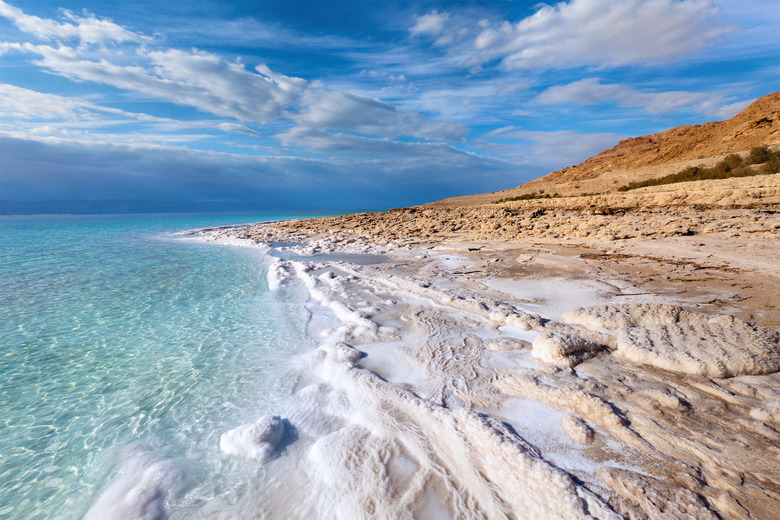5 Requirements To Be A Mineral
Minerals are inorganic, crystalline solids that occur during biogeochemical processes in nature like in cooled lava or evaporated sea water. Minerals are not rocks, but are actually the components that make up rocks. Though they vary in color and shape, each mineral has a distinct chemical composition.
Naturally Occurring
Naturally Occurring
Minerals are formed by natural geological processes. Most minerals form from molten lava, sea evaporation or hot liquids in caves or cracks. Laboratory-generated minerals like synthetic gems made for commercial purposes are not considered actual minerals.
Solid
Solid
Though minerals vary in shape, color, luster (the way a mineral reflects light) and hardness, all minerals are a solid at a given temperature. If a substance is not in its solid state, it is not currently a mineral. For example, ice is a mineral, but liquid water is not. The Mohr scale, rates a minerals hardness from one to 10, 10 being the hardest. Diamond is the hardest mineral. Talc is a very soft mineral with a Mohr rating of one.
Inorganic
Inorganic
Minerals are wholly inanimate, inorganic compounds. But there are exceptions to this qualifier. There are rare organic substances with definitive chemical compositions that are labeled as "organic minerals." The most famous of this oxymoronic exception is whewellite. Whewellite is a component of kidney stones and coal deposits.
Crystalline
Crystalline
Most minerals will grow into a crystal shape, space permitting. Mineral deposits are often small because there is usually a variety of minerals in the same vicinity competing for the same room to grow. A mineral's crystalline structure determines its hardness, cleavage (how it breaks) and color. There are six different crystal shapes: cubic, tetragonal, orthohombic, hexagonal, monoclinic and triclinic.
Specific Chemical Composition
Specific Chemical Composition
A mineral is defined by its chemical composition. A rock, on the other hand, does not have a specific chemical composition because it is a composite of a variety of minerals. Minerals are classified based on their anionic group. The major mineral groups are native elements, sulfides, sulfosalts, oxides and hydroxides, halides, carbonates, nitrates, borates, sulfates, phosphates and silicates. Silica is abundant in the Earth's crust, so silicates are the most common group of mineral.
References
Cite This Article
MLA
Brooklyn, Lark. "5 Requirements To Be A Mineral" sciencing.com, https://www.sciencing.com/5-requirements-mineral-10067381/. 13 March 2018.
APA
Brooklyn, Lark. (2018, March 13). 5 Requirements To Be A Mineral. sciencing.com. Retrieved from https://www.sciencing.com/5-requirements-mineral-10067381/
Chicago
Brooklyn, Lark. 5 Requirements To Be A Mineral last modified August 30, 2022. https://www.sciencing.com/5-requirements-mineral-10067381/
